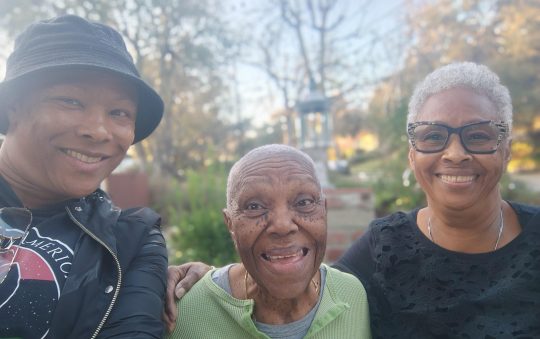
The recent Eaton Canyon wildfire didn’t just ravage landscapes — it scorched memories, homes, and dreams of the community I hold close to my heart, like my first two childhood homes near Loma Alta Park. Despite our town enduring countless wildfires and significant losses over the decades, I can’t recall anyone discussing the possibility of a scenario where fire, driven by 100 mph Santa Ana winds, could hurl embers two-to-three miles away, obliterating the entire community. Yet, that is now our reality.
The Eaton Canyon wildfire also erased an immeasurable amount of rich Black history, reducing the homes of many to ashes, including my 89-year-old cousin, James Preston, who lived near Mariposa and Marengo.
On the positive side, it has sparked a powerful sense of connection within Altadena’s Black community, with stories, including my own, being shared more openly than ever before, gaining national attention. Until the wildfire, these families were quietly and productively building lives in the serene, secluded foothills of Altadena.
In 1989, life was good for my family. We lived north of NASA’s JPL in the Meadows of Altadena, surrounded by towering mountains and a deep canyon behind our home. My brother and I often hiked to Millard Falls, yet within a year, those wilderness adventures ended when we relocated to Oklahoma City with my stepfather.
After a year, the marriage ended due to domestic violence; my mother and I moved back to Altadena living with my grandparents, the Scotts, who had settled on Neldome Street in 1960.
A few months later my mother and I moved to an apartment on Sunset Avenue in Pasadena owned by the cousin of our family friend Odessa King, Rodney Glen King’s mother. In March 1991, like others in our community and nationwide, we were outraged and heartbroken by the brutal and unjustified abuse Rodney suffered. We found solace in the exposure of LAPD’s systemic racism and inhumane treatment of African Americans—a longstanding open secret in Los Angeles.
Years later, Rodney’s sister Ratasha shared a heartfelt memory with me. She said that during our time at John Marshall Junior High School I was a source of comfort during difficult moments. This meant a great deal to me. From an early age, I knew emotional support was more valuable than silver or gold.
By the spring of 1995, my mom and I moved back to Altadena to support my grandparents who needed care. I also started attending John Muir High School, where Jesse Jackson once delivered a powerful speech encouraging us to vote. Simultaneously, I was captivated by the historic Million Man March in Washington, D.C., wishing I could attend. Instead, I immersed myself in Brandy & Monica, Tupac’s artistry and lyrics, and other BET music videos.
Although I’ve lived in New York for the past decade, my heart and soul remain in the foothills of the San Gabriel Valley — a place I cherish and a community I’m proud to call home. Because of the impact of the fires on my beloved hometown, my goal has become to be of service to Altadena by providing emotional support to those affected, helping care for animals, volunteering in cleanup efforts to help rebuild, and documenting the aftermath through writing, photography, and interviews. Preserving these stories of resilience and recovery is essential. Witnessing the devastation is heartbreaking, but there’s no other place I’d rather be or feel more compelled to serve during this challenging time.
As we gather to celebrate Black History Month, let us remember that Black history is also American history and world history. It must be preserved and honored at all costs.



